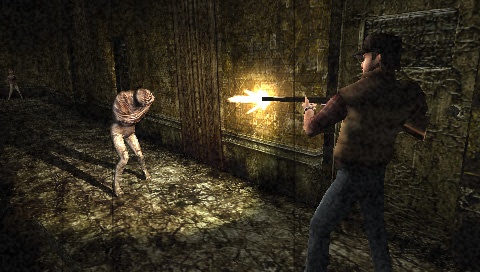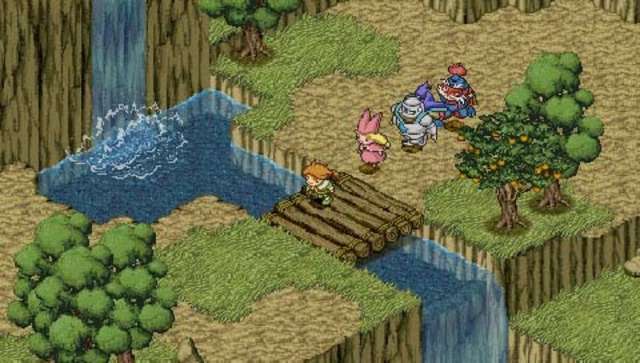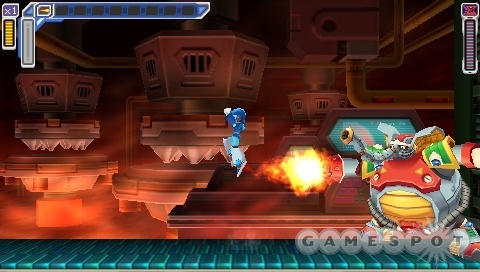
With recently circulating rumors that Sony is developing a new handheld device that will be reportedly “more powerful” than Microsoft’s Xbox Series S, it might be fun to look back at the company’s very first portable system: the PlayStation Portable (PSP). Debuting near the very end of 2004 in Japan, and receiving international releases starting in 2005, the PSP – while not as successful as Nintendo’s DS and 3DS – still had a notable library of interesting games.
10. Silent Hill: Origins (2007)

Ironically, being the then-upcoming video game I specifically purchased my PSP for in the summer of 2006, Silent Hill: Origins was actually scrapped, moved to, and rebooted by another development company, and finally released way later in the fall of 2007. While the game isn’t without its narrative and gameplay issues (with the latter category’s breakable melee weapon system being very poorly implemented), Origins is nonetheless a relatively well-crafted, “bite-sized” Silent Hill experience that looks and runs surprisingly well on the portable system (and with a pretty good soundtrack too).
9. Every Extend Extra (2006)
In what could accurately be called Synesthesia: The Video Game, Every Extend Extra (or E3 for short) is an expanded re-release of the very trippy and psychedelic puzzle-shooter hybrid game Every Extend (or E2) that was released for Windows back in 2004. E3‘s ultra-stylized and surreal audio/visual presentation, as well as its unique focus on detonating your “ship” to destroy incoming enemies, brings to mind other, similarly esoteric shooters like Rez, Ikaruga, and Child of Eden.
8. Gurumin: A Monstrous Adventure (2007)
As with E3, 3D action-adventure RPG Gurumin was originally developed for Japanese Windows systems back in 2004 before receiving an internationally released port for the PSP in 2007 (itself later re-released on the 3DS in 2016). Starring a young girl wielding a drill-like apparatus and venturing through a hidden world of monsters who can’t be seen by adults, the game is actually pretty fun despite being ostensibly designed for fairly young audiences – but with surprisingly tough difficulty options (and a particularly nasty bonus boss) that might even challenge seasoned gamers.
7. PopoloCrois (2005)

Going back to an underrated video game franchise that I previously discussed, the PopoloCrois series was (and primarily still is) very exclusive to the Japanese market: however, in 2005, a new PSP collection featuring a combined (but heavily abridged) re-release of the mainline PS1 titles PopoloCrois Story and Story 2 was developed and localized for the North American market. While both games are admittedly not the most impressive-looking or challenging entries within the classic turn-based RPG genre, the characters, setting, and overall narrative are just too appealing to hate.
6. The 3rd Birthday (2011)
Serving as the third entry in Square’s Parasite Eve survival horror-action RPG hybrid franchise, the PSP title The 3rd Birthday introduces a new “body-jumping” mechanic allowing protagonist Aya Brea to zip into and take control of various human characters. While the new mechanic is very fun (and the game is a really, really fantastic graphical showcase on the PSP), the plot is admittedly somewhat convoluted, not helped by a particular “reveal” that might sour some PE and PE2 fans.
5. Metal Gear Solid: Peace Walker (2010)
Following the release of Portable Ops on the PSP in 2006 (now sitting in “fluctuating” canonicity within the larger Metal Gear franchise), 2010’s Peace Walker serves as an official continuation of main protagonist Naked Snake‘s journey to becoming future anti-villain Big Boss. Taking and expanding on Portable‘s squad-based gameplay format, PW features a fairly complex but engaging “base-building” system that requires the direct management of the “Mother Base” military compound’s personnel and resources (as largely “procured” from enemy forces during missions).
4. Final Fantasy Tactics: TWotL (2007)

2007’s The War of the Lions – an updated PSP re-rerelease of 1997’s Final Fantasy Tactics – took an already well-built and -loved tactical RPG title and provided various tweaks to it, including: a greatly rewritten/corrected/expanded English script, new playable characters (and character classes), and the addition of lavish, cel-shaded animated cutscenes. Furthermore, TWotL even allowed for multiplayer gameplay with other PSP units, with that (and all other new features) leading to this version of Tactics being directly adopted for re-release on smartphones and tablets in the 2010s.
3. Lunar: Silver Star Harmony (2010)
Serving as a timely inclusion in light of the (as of this writing) newly released Lunar Remastered Collection, the enhanced PSP remake of the first Lunar title’s “Complete” port for the PS1 was admittedly the very first time I actually sat down and played through a game in that series (despite being aware of its previous existence on the Sega CD). I immediately fell in love with the story and characters of SSH (as well as Noriyuki Iwadare‘s near-consistently great music) and was genuinely disappointed that the sequel’s PS1 port didn’t ever receive a similarly enhanced remake at the time.
2. Castlevania: The Dracula X Chronicles (2007)
Presenting a fantastic 2.5D remake of the PC Engine’s 1993 CD-ROM² version of Rondo of Blood (never physically released outside of Japan), The Dracula X Chronicles was a very welcome addition to the PSP’s library for those eager to finally experience RoB themselves. The base game, which is a highly satisfactory product in its own right, is graciously elevated with the unlockable inclusion of a newly localized port of the original PCE release and an updated edition of Symphony of the Night.
1. Mega Man: Maverick Hunter X (2006)

Placed here for being the very first PSP title I bought, played, and completed, Mega Man: Maverick Hunter X is another wonderfully crafted 2.5D remake of the 1994 original SNES game – including a reworked soundtrack, full voice-acting for characters, and (as a nice little bonus after beating the game) an animated prequel short called The Day of Sigma. Furthermore, the remake also includes another, uniquely themed campaign allowing players to take on the role of secondary antagonist Vile.
More must-reads:
- Dodgers snatch potential impact arm from Yankees
- Warriors’ Draymond Green wins 2024-25 Hustle Award
- The 'NBA playoff triple-doubles leaders' quiz
Breaking News
Trending News
Customize Your Newsletter
 +
+
Get the latest news and rumors, customized to your favorite sports and teams. Emailed daily. Always free!








